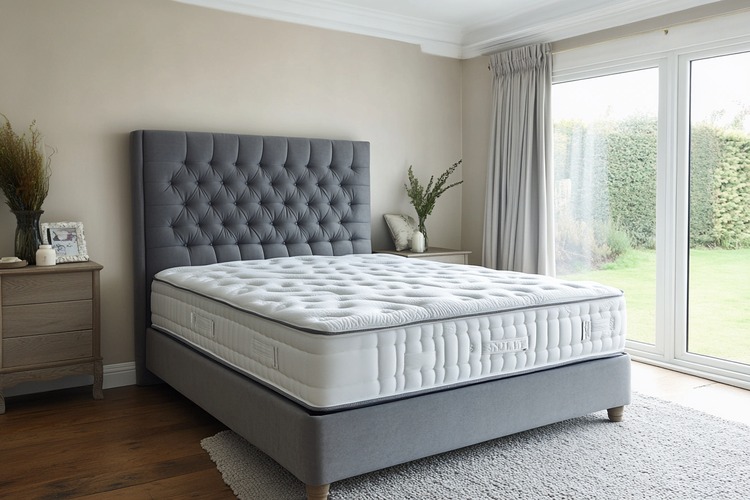Discover 5 Everyday Kitchen Ingredients That Can Help Deal with Bed Bugs
Bed bugs can turn your peaceful home into a nightmare, but before calling professional exterminators, you might find surprising allies right in your kitchen pantry. Common household ingredients like baking soda, diatomaceous earth, and essential oils have shown promising results in managing these persistent pests. While these natural methods may not completely eliminate severe infestations, they can serve as effective supplementary tools in your battle against bed bugs, offering safer alternatives for homes with children and pets.

Bed bugs are among the most frustrating household pests, capable of disrupting sleep and causing significant stress for homeowners. These tiny bloodsuckers have made a remarkable comeback in recent decades, infesting homes, hotels, and apartments across the country. Understanding why bed bugs occur and exploring natural remedies can help you take the first steps toward reclaiming your space.
Why Do Bed Bugs Occur in Modern Homes
Bed bugs don’t appear due to poor hygiene or cleanliness, contrary to popular belief. These resilient insects spread primarily through travel, used furniture, and close proximity to infested areas. They hitchhike on luggage, clothing, and personal belongings, making even the cleanest homes vulnerable. Increased international travel, the resurgence of bed and breakfast accommodations, and the growing second-hand furniture market have all contributed to their widespread return. Bed bugs thrive in environments where they have easy access to human hosts, particularly in bedrooms and living areas where people spend extended periods.
Baking Soda: A Simple Dehydration Method
Baking soda works as a natural bed bug deterrent by absorbing moisture from their bodies, potentially causing dehydration. Sprinkle a thin layer of baking soda around bed frames, along baseboards, and in cracks where bed bugs might hide. Leave it for several hours or overnight, then vacuum thoroughly. While this method may help reduce bed bug populations, it requires consistent application and works best as part of a comprehensive treatment approach. The effectiveness varies, and severe infestations typically require more aggressive intervention.
Diatomaceous Earth: Food-Grade Pest Control
Food-grade diatomaceous earth consists of microscopic fossilized algae that can damage bed bug exoskeletons. When bed bugs crawl through this powder, the sharp particles can cause tiny cuts that lead to dehydration. Apply a light dusting in areas where bed bugs travel, including along mattress seams, bed frames, and carpet edges. Always use food-grade diatomaceous earth, as pool-grade versions contain harmful chemicals. This method requires patience, as results may take several days to weeks, and complete elimination of established populations is unlikely without professional intervention.
Essential Oils: Natural Repellent Properties
Certain essential oils, including tea tree, lavender, peppermint, and eucalyptus, possess properties that bed bugs find unpleasant. Create a spray solution by mixing 10-15 drops of essential oil with water in a spray bottle. Apply to mattress seams, bed frames, and surrounding areas. While these oils may help repel bed bugs and mask human scents that attract them, they rarely eliminate existing infestations. The strong scents can also be overwhelming for some people, and effectiveness diminishes as the oils evaporate over time.
Heat Treatment: Using Common Kitchen Appliances
Bed bugs cannot survive temperatures above 120°F, making heat treatment an effective approach. Use your dryer on high heat settings for infested clothing, bedding, and small fabric items for at least 30 minutes. For larger items, consider using a steamer to apply direct heat to mattress seams, furniture joints, and cracks. Some people use hair dryers to target specific areas, though this method requires careful application to avoid fire hazards. Professional heat treatment services use specialized equipment to achieve consistent temperatures throughout entire rooms.
Professional Services and Cost Considerations
While kitchen ingredients can provide temporary relief, severe bed bug infestations typically require professional intervention. Most bed bug removal services offer comprehensive treatment plans that may include chemical applications, heat treatments, or integrated pest management approaches.
| Service Type | Provider Examples | Cost Estimation |
|---|---|---|
| Chemical Treatment | Orkin, Terminix, Local Services | $300-$1,500 per treatment |
| Heat Treatment | Bed Bug Heat Doctors, Local Specialists | $800-$2,500 per room |
| Integrated Management | Regional Pest Control Companies | $500-$2,000 total program |
Prices, rates, or cost estimates mentioned in this article are based on the latest available information but may change over time. Independent research is advised before making financial decisions.
Additional Tips for Bed Bug Prevention
Prevention remains the most effective strategy against bed bugs. Inspect second-hand furniture carefully before bringing it home, check hotel rooms during travel, and wash clothing in hot water after trips. Regular vacuuming, reducing clutter, and sealing cracks around beds can help minimize hiding places. If you suspect bed bug activity, act quickly to prevent population growth. Document evidence with photos and consider consulting professional services for accurate identification and treatment recommendations.
While everyday kitchen ingredients can serve as helpful tools in managing bed bug problems, they work best as supplementary measures rather than complete solutions. Combining natural methods with professional expertise often provides the most effective approach to eliminating these persistent pests and preventing future infestations.




